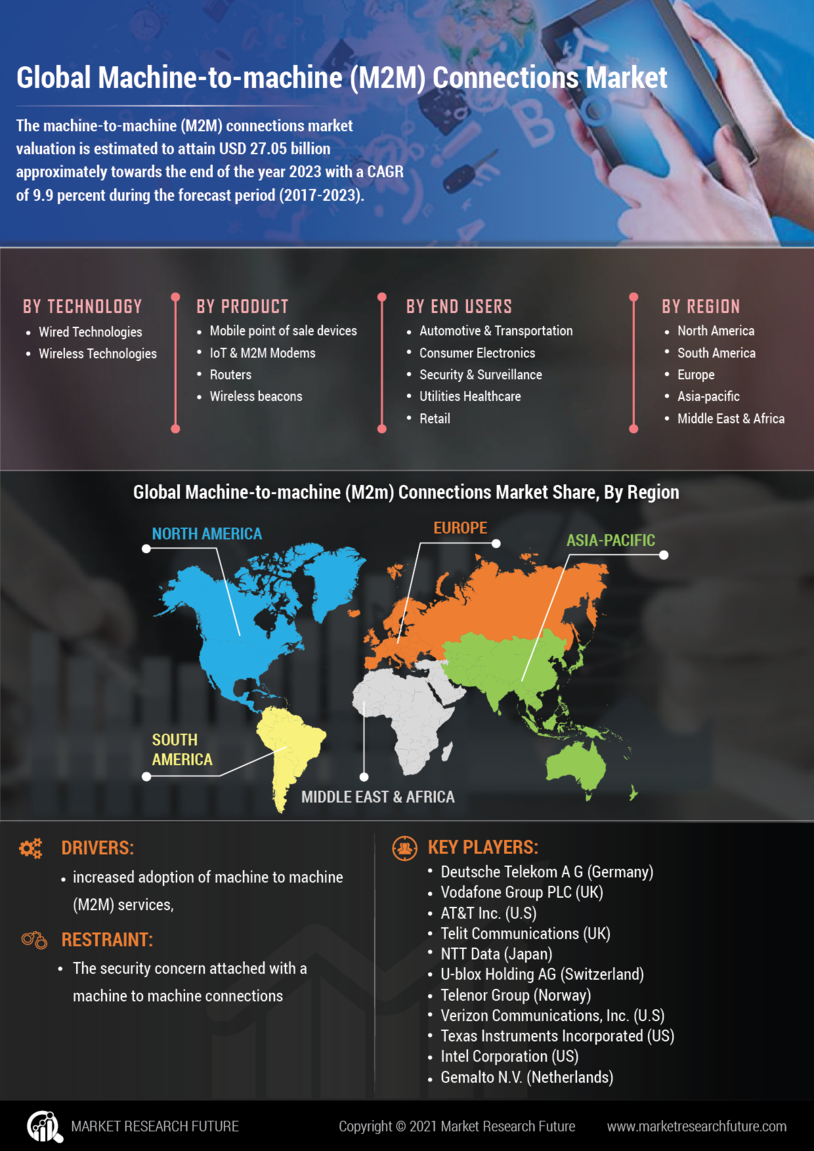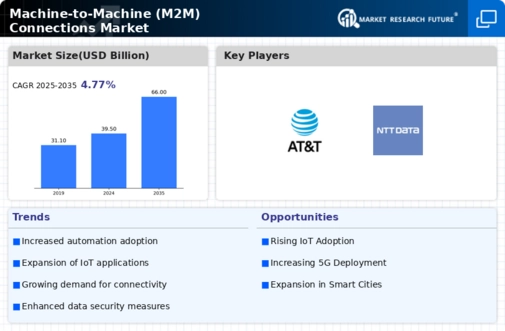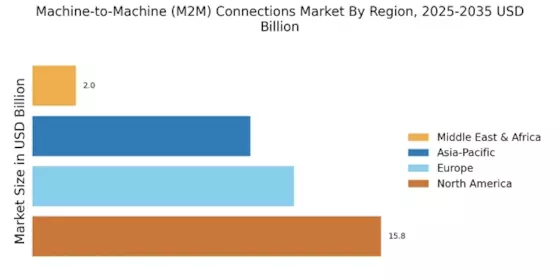Leading market players are investing heavily in research and development in order to expand their product lines, which will help the Machine-to-Machine (M2M) Connections market, grow even more. Market participants are also undertaking a variety of strategic activities to expand their global footprint, with important market developments including new product launches, contractual agreements, mergers and acquisitions, higher investments, and collaboration with other organizations. To expand and survive in a more competitive and rising market climate, Machine-to-Machine (M2M) Connections industry must offer cost-effective items.
Manufacturing locally to minimize operational costs is one of the key business tactics used by manufacturers in the global Machine-to-Machine (M2M) Connections industry to benefit clients and increase the market sector. In recent years, the Machine-to-Machine (M2M) Connections industry has offered some of the most significant advantages to medicine.
Major players in the Machine-to-Machine (M2M) Connections market, including Deutsche Telekom AG (Germany), Vodafone Group PLC (UK), AT&T Inc. (U.S), Telit Communications (UK), NTT Data (Japan), U-blox Holding AG (Switzerland), Telenor Group (Norway), Verizon Communications Inc. (U.S), Texas Instruments Incorporated (US), Intel Corporation (US), Gemalto N.V. (Netherlands) and others, are attempting to increase market demand by investing in research and development operations.
A provider of integrated telecommunications and information technology services is Deutsche Telekom AG (Deutsche Telekom). For business and corporate clients, the company offers mobile communications, IPTV goods and services, fixed networks, internet, and information and communication technology (ICT). Additionally, it provides cloud-based services, such as customized infrastructure, global networks, platforms, and software, as well as traditional ICT services and legacy systems, as well as voice and data services for digital mobile telephony, such as SMS and mobile internet. The brand names T and Deutsche Telekom are used by the business to sell its services.
Its business operations are spread over the Americas, Europe, Africa, and Asia. In Germany's North Rhine-Westphalia state of Bonn, Deutsche Telekom has its headquarters.
IT services and products are offered by NTT DATA Group Corp (NTT Data), formerly NTT DATA Corp. Data communication systems are developed, maintained, sold, and leased by the company. It provides a range of IT services, such as advising, enterprise application, application development, and management, as well as SAP, cloud, cybersecurity, infrastructure, and Oracle solutions. It also provides consultancy, data and intelligence, and architecture services. Public administration, healthcare, financial institutions, education, the automotive industry, manufacturing, retail, logistics, energy & utilities, and telecommunications are among the industries that NTT Data services.
Asia-Pacific, Europe, the Middle East, and the Americas are all commercially active for the company. The corporate headquarters of NTT Data, a division of Nippon Telegraph & Telephone Corp., are located in Koto-Ku, Tokyo.

















Leave a Comment